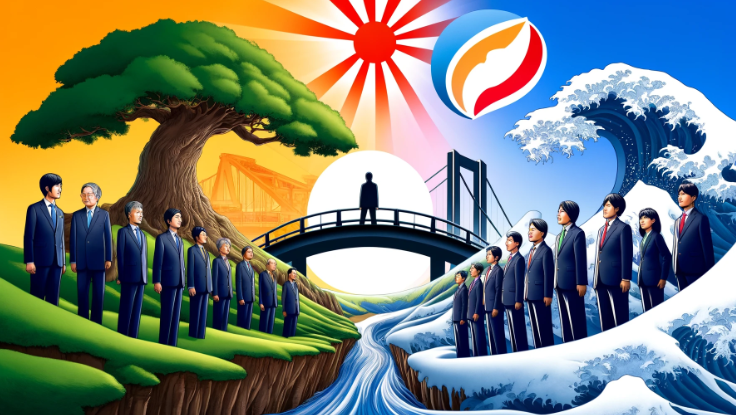
[embedyt] https://www.youtube.com/watch?v=RZpiIqQLHs4[/embedyt]
The political landscape of Japan has long been characterized by the dominance of the Liberal Democratic Party (LDP) on the right-wing spectrum, with parties like the Komeito and the Constitutional Democratic Party of Japan filling the centrist and left-wing slots.
However, a fresh wind is beginning to blow through this domain.
The newly-established “Conservative Party of Japan” , led by Naoki Hyakuta, has exhibited staggering popularity, especially when gauging by their Twitter(X) followers.
Since its founding in September 2023, the follower count has skyrocketed, outpacing other major political parties.
Why is this new party garnering such immense attention?
Behind the scenes, the sudden death of former Prime Minister Shinzo Abe and the subsequent upheaval within the LDP have played a role.
Post-Abe’s demise, the LDP found its intra-party balance shaky, leading Prime Minister Kishida to lean towards the left-wing with the support of other parties.
This shift arguably created a void among traditional conservative supporters, a gap deftly filled by the Hyakuta-led Conservative Party.
Naoki Hyakuta was a staunch supporter of Abe during his lifetime.
Consequently, the formation of the new party can be seen as a continuation of Abe’s ideals, gaining significant traction among conservative voters.
The rise of this party promises significant ramifications for the Japanese political scene, and one cannot afford to overlook its movements.
In essence, the stance of the Japan Conservative Party can be summarized as follows:
“Conservative Party of Japan” advocates for a “new conservatism” that respects over 2,000 years of unique Japanese traditions and culture.
Rather than being trapped in old patterns, they emphasize evolving with the times, embracing necessary changes while upholding core values and traditions.
They accuse the current LDP of losing sight of its conservative roots, pointing to issues such as the hasty establishment of an LGBT understanding enhancement law, challenges related to foreign worker acceptance, lenient energy policies, increasing liberalization, and the growth of second-generation politicians.
“Conservative Party of Japan” believes in Japanese pride, highlighting roles Japan played in liberating Asia and Africa from colonial rule, and emphasizing the long-standing imperial system.
They advocate for pride in Japan while maintaining a balance between tradition and the modern era.
Tracing the origins of Japanese conservatism, there are primarily two (plus some) streams.
The first traces its roots from the old Constitutional Party, moving to the Liberal Party, and then to the LDP.
The second originates from the Japan Cooperative Party, transitioning through the Improvement Party under GHQ occupation, to the Japan Democratic Party established in November of the Showa 29th year with Ichiro Hatoyama as president, and then joining the LDP. Another stream stems from the “Japan Reconstruction League” led by Shinsuke Kishi after his return from the GHQ’s public office purge.
This league aimed for independence, emphasizing anti-communism, Japan-US economic alliance, and five major policies for people’s stability.
Shinsuke Kishi, the grandfather of former PM Abe, was not inclined towards conservative parties but hoped for the birth of a national innovative party.
While it’s unclear if Abe directly adhered to the “Japan Reconstruction League” ideals, he possibly was deeply conscious of the spirit of independence from GHQ control.
This spirit of independent pride contrasts sharply with the conservatism that followed GHQ’s preferences, and the formation of the new “Conservative Party of Japan” being distinct from the LDP’s “main conservative stream” can arguably be attributed to this historical context.